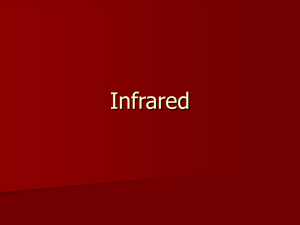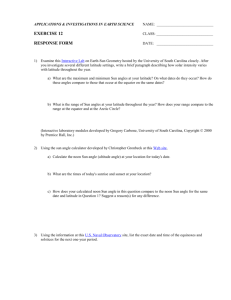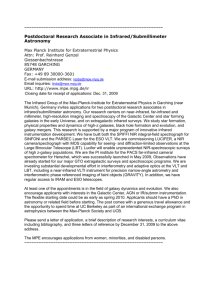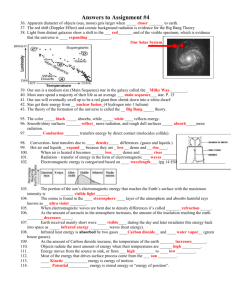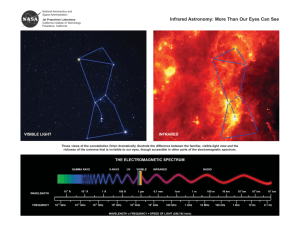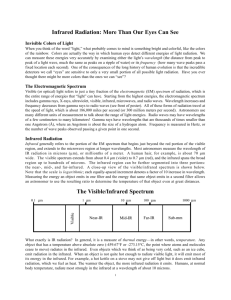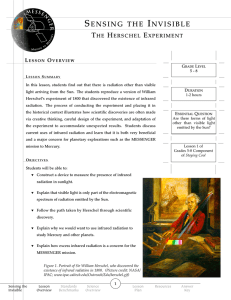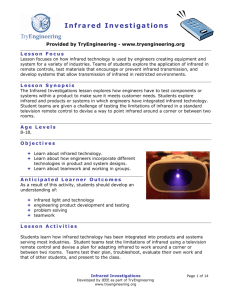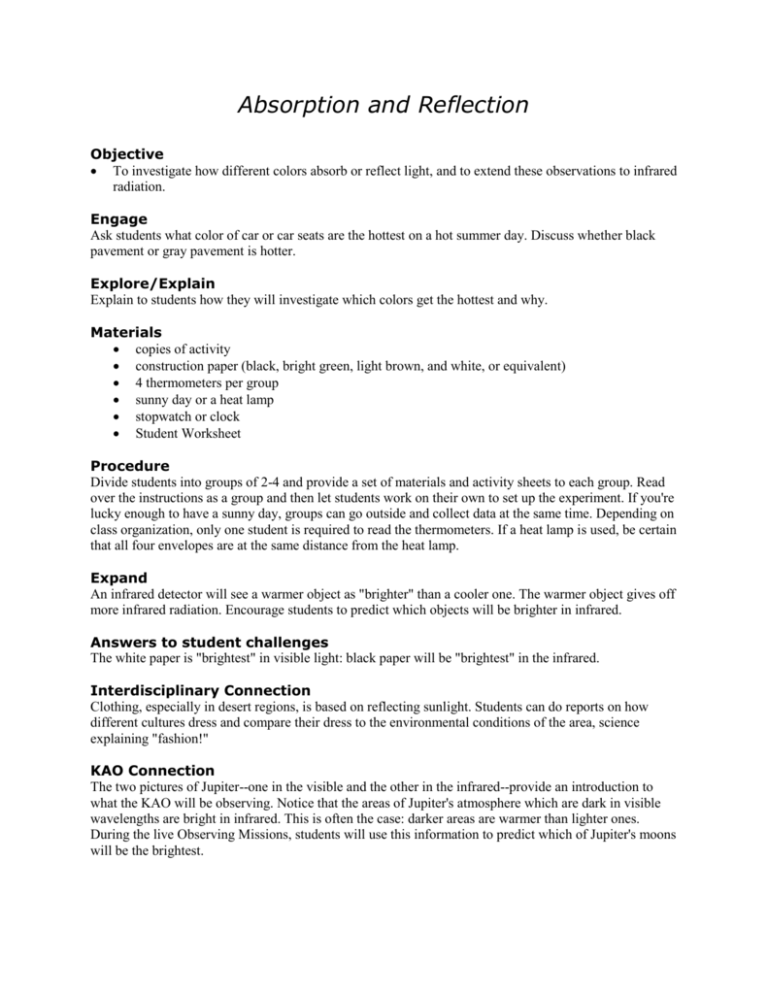
Absorption and Reflection
Objective
To investigate how different colors absorb or reflect light, and to extend these observations to infrared
radiation.
Engage
Ask students what color of car or car seats are the hottest on a hot summer day. Discuss whether black
pavement or gray pavement is hotter.
Explore/Explain
Explain to students how they will investigate which colors get the hottest and why.
Materials
copies of activity
construction paper (black, bright green, light brown, and white, or equivalent)
4 thermometers per group
sunny day or a heat lamp
stopwatch or clock
Student Worksheet
Procedure
Divide students into groups of 2-4 and provide a set of materials and activity sheets to each group. Read
over the instructions as a group and then let students work on their own to set up the experiment. If you're
lucky enough to have a sunny day, groups can go outside and collect data at the same time. Depending on
class organization, only one student is required to read the thermometers. If a heat lamp is used, be certain
that all four envelopes are at the same distance from the heat lamp.
Expand
An infrared detector will see a warmer object as "brighter" than a cooler one. The warmer object gives off
more infrared radiation. Encourage students to predict which objects will be brighter in infrared.
Answers to student challenges
The white paper is "brightest" in visible light: black paper will be "brightest" in the infrared.
Interdisciplinary Connection
Clothing, especially in desert regions, is based on reflecting sunlight. Students can do reports on how
different cultures dress and compare their dress to the environmental conditions of the area, science
explaining "fashion!"
KAO Connection
The two pictures of Jupiter--one in the visible and the other in the infrared--provide an introduction to
what the KAO will be observing. Notice that the areas of Jupiter's atmosphere which are dark in visible
wavelengths are bright in infrared. This is often the case: darker areas are warmer than lighter ones.
During the live Observing Missions, students will use this information to predict which of Jupiter's moons
will be the brightest.
A thermometer measures the temperature or amount of heat energy in an object.
For this experiment you need
construction paper (black, green, brown and white)
4 thermometers, a hot sunny day, or a heat lamp
With the construction paper, make small envelopes to cover the bulbs of the thermometers. Then place the
four thermometers inside their paper covers in a sunny area without much wind. All four thermometers
should receive the same amount of sunlight and should not be touching. Predict which color will get the
warmest, most quickly.
Record the temperature shown on each thermometer as the experiment starts, and again after 5, 10, and 20
minutes.
Color
White
Brown
Green
Black
As the experiment starts
After 5 minutes
After 10 minutes
After 20 minutes
Infrared radiation from the sun does not reach the earth's surface, but the sun's visible light can be turned
into heat. Bright colors reflect visible light. Dark colors absorb visible light and convert the light energy
into heat. These hot objects can re-radiate the sun's energy as infrared radiation.
Which piece of construction paper is the "brightest" in visible light? _____________
Which is "brightest" in infrared radiation? __________
Study these two images of Jupiter: one in visible light and the other in the infrared. Use the experiment
above to explain differences you observe in the two images. (The images were not made at the same
moment, so the features do not match exactly.)
KAO Corner
Aboard the KAO, sensitive solid state detectors measure infrared radiation. Warm objects that are dark in
visible light can be very bright in infrared wavelengths.
© 2002 Passport to Knowledge. All Rights Reserved.



